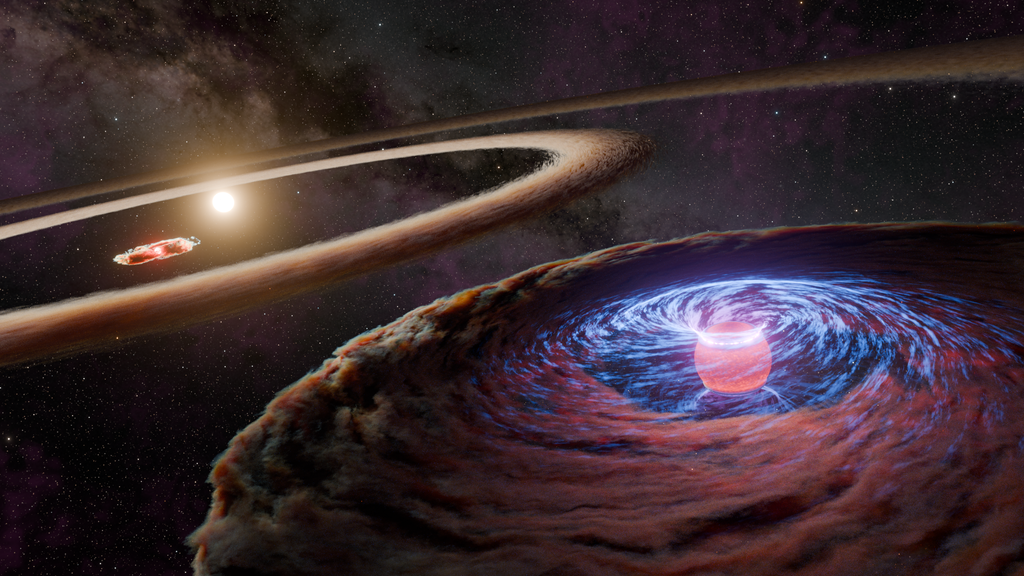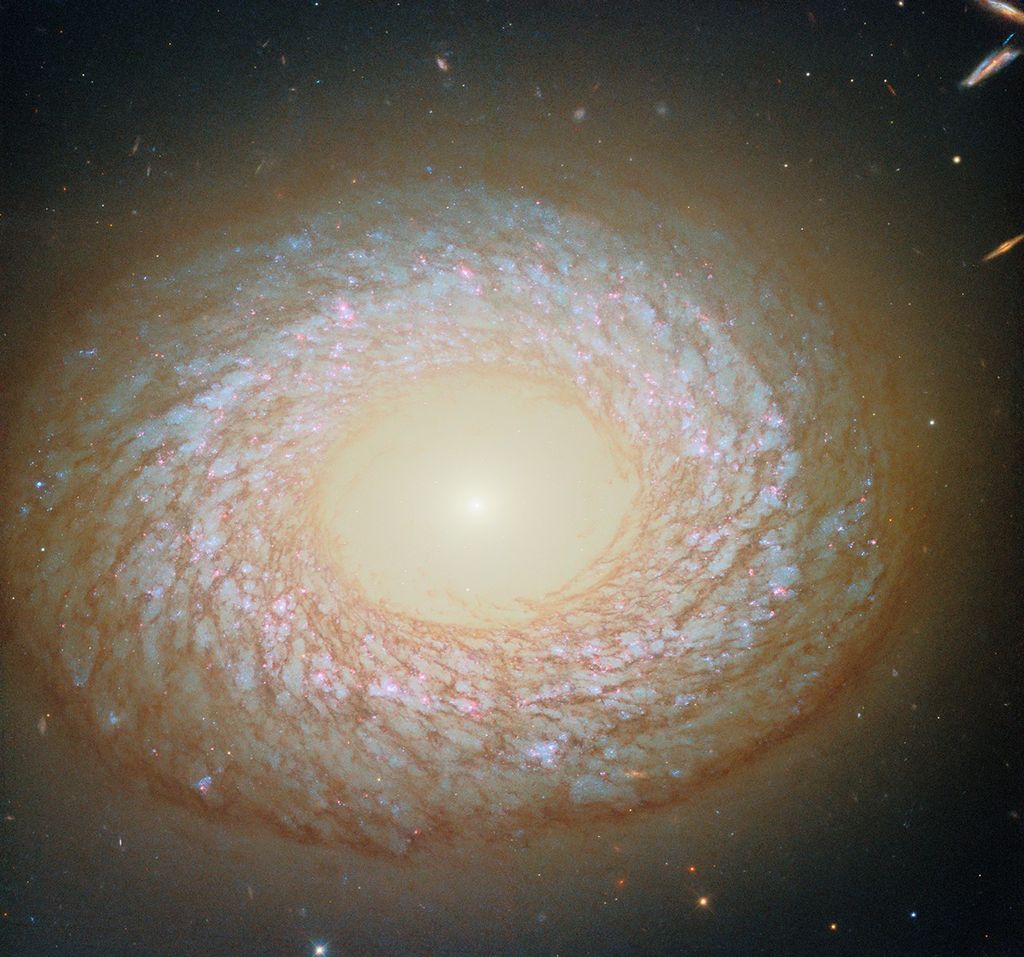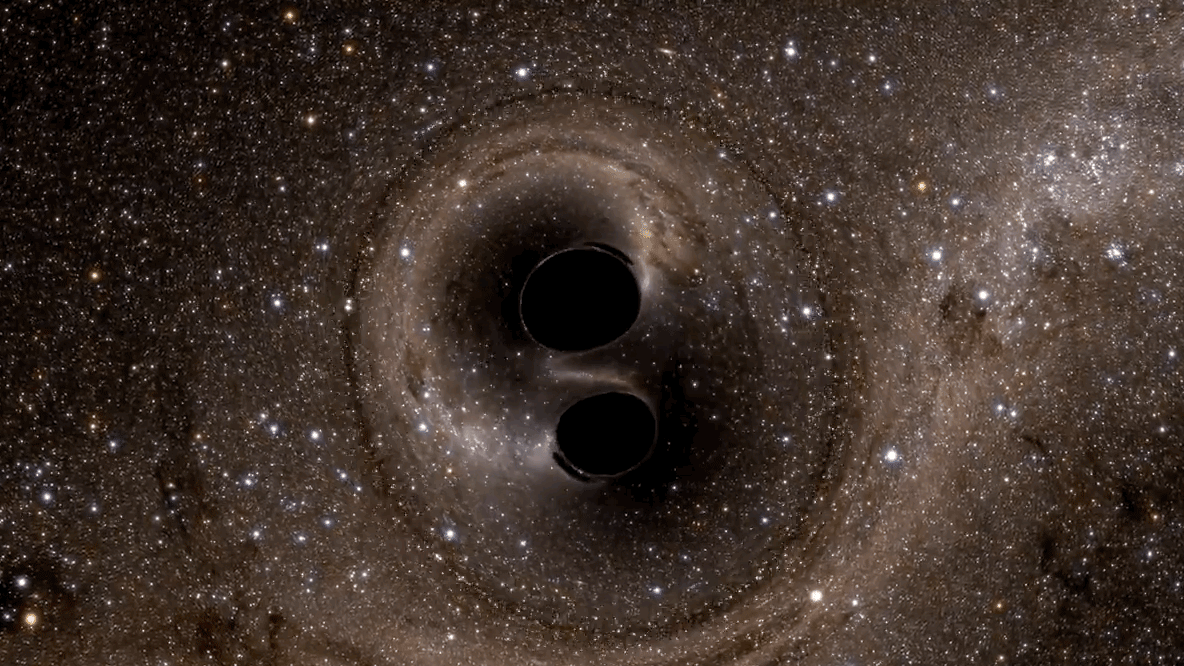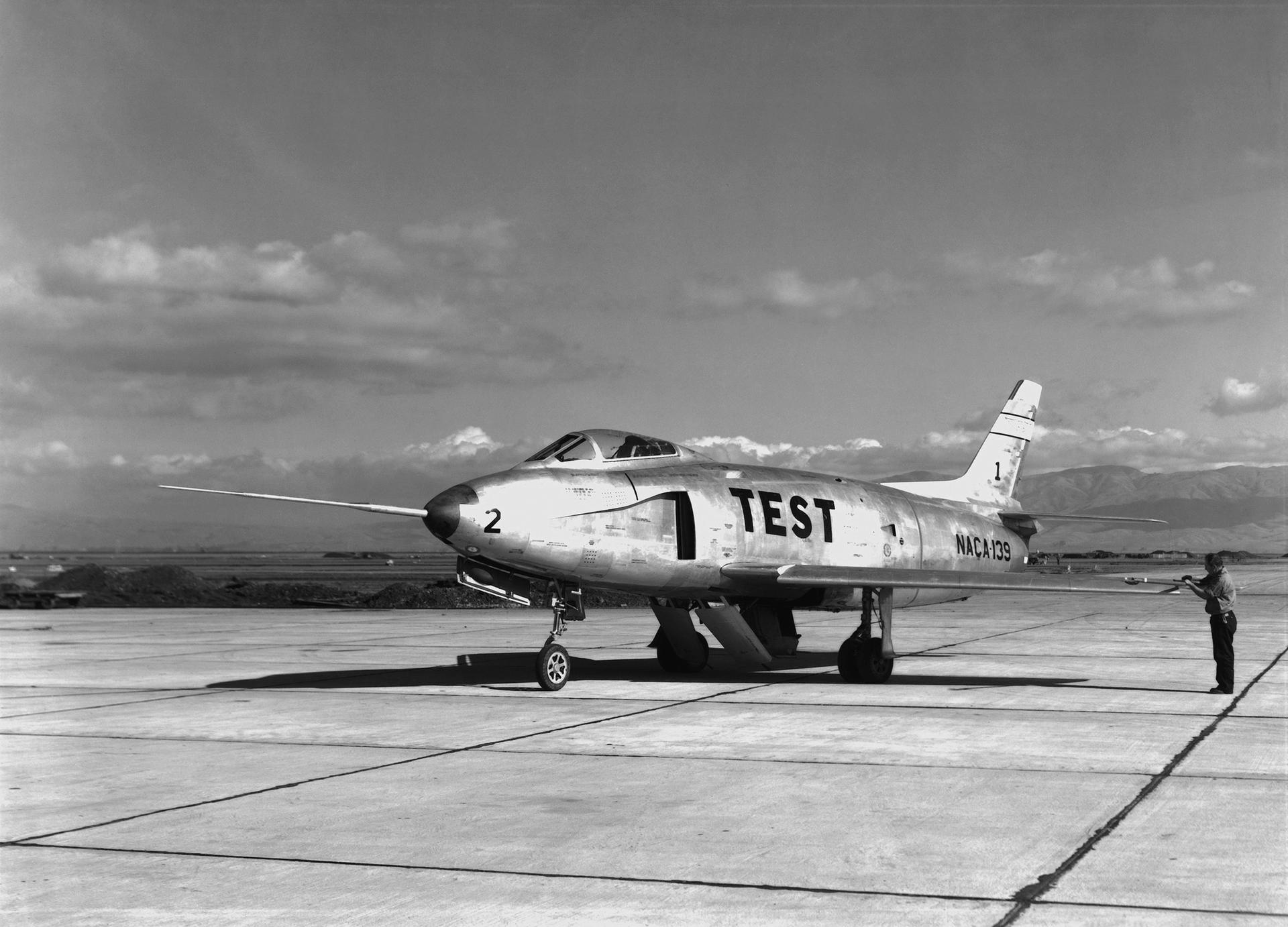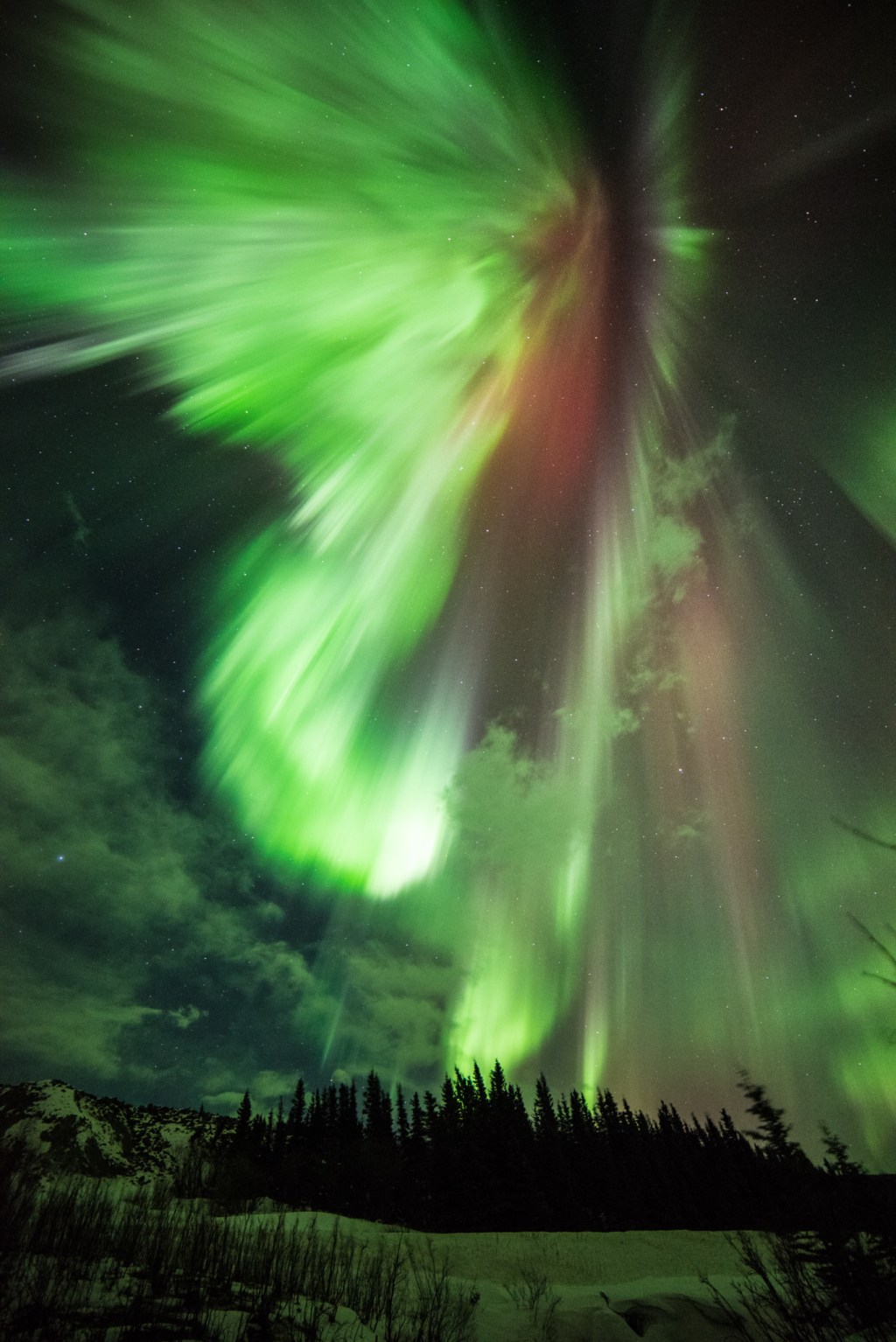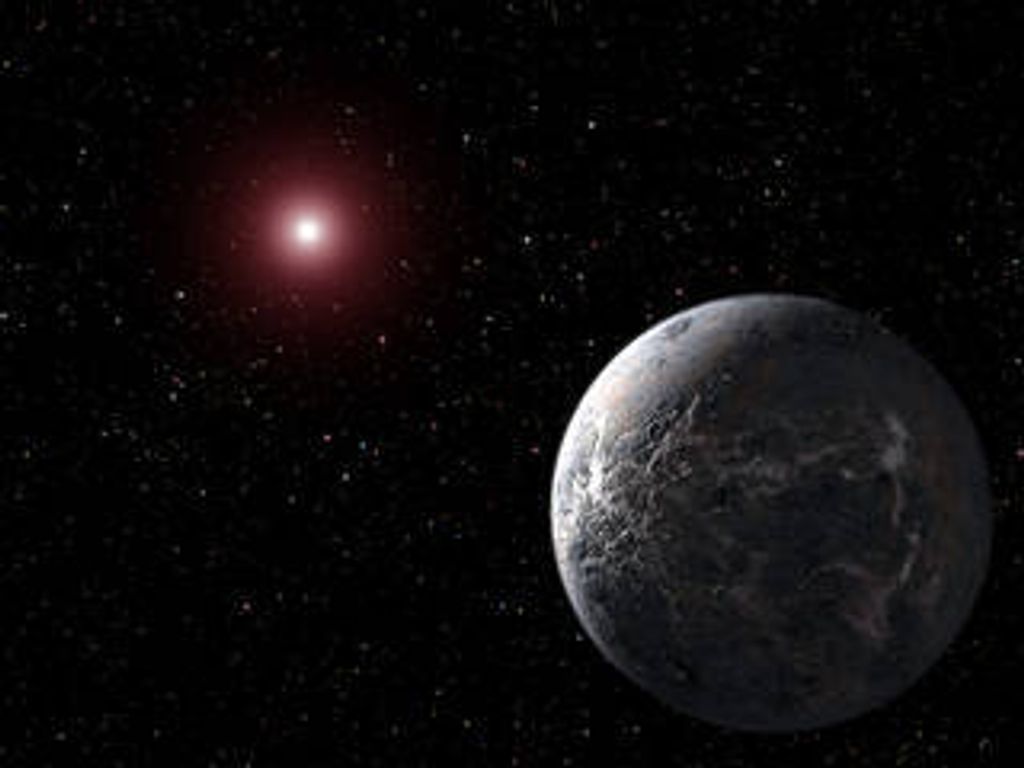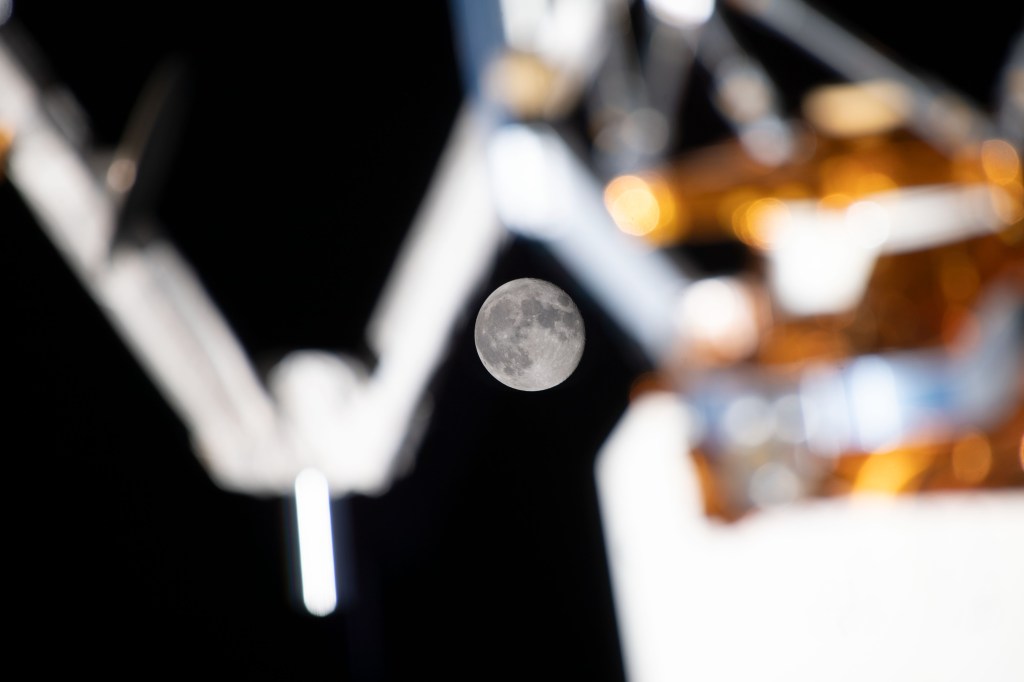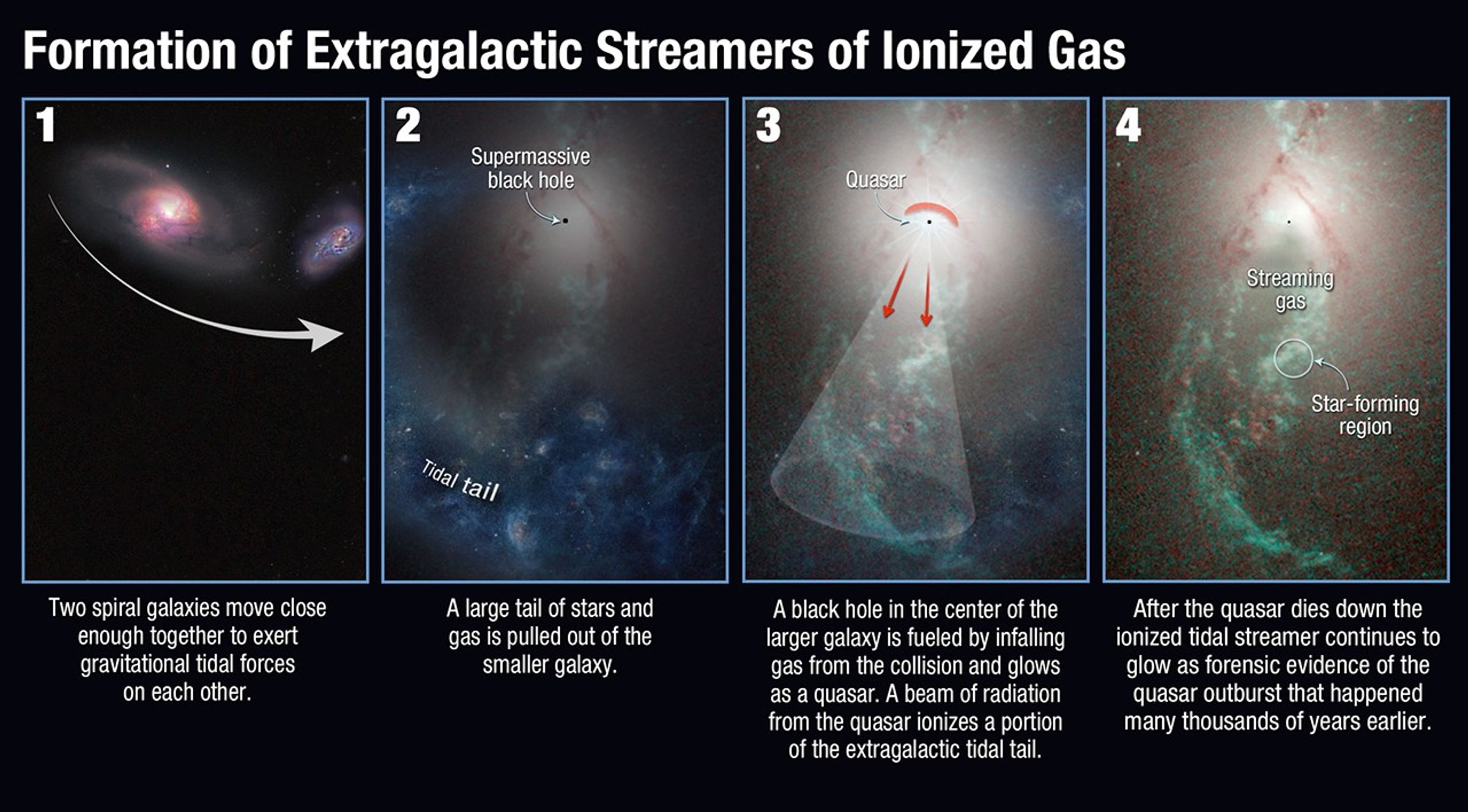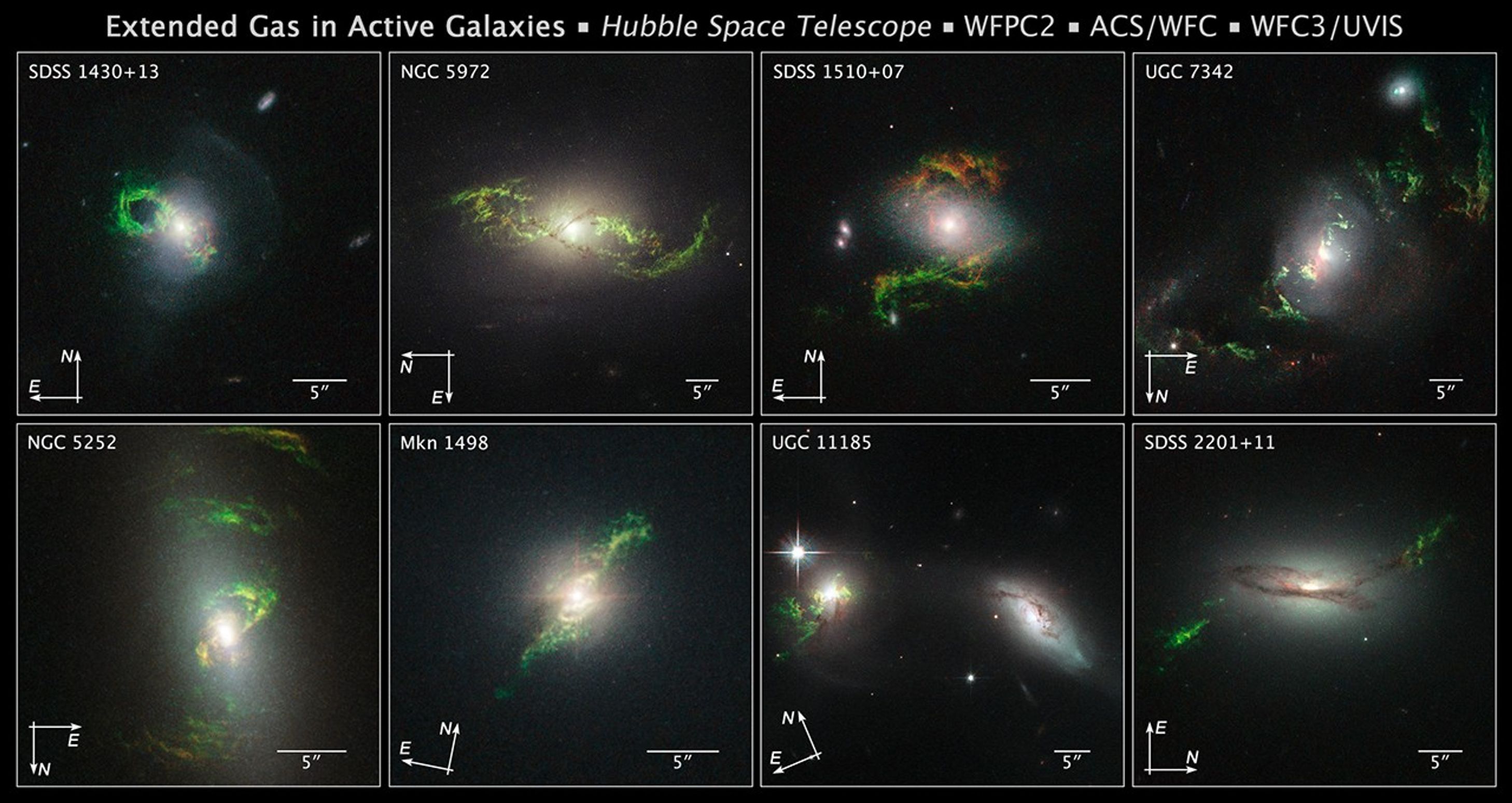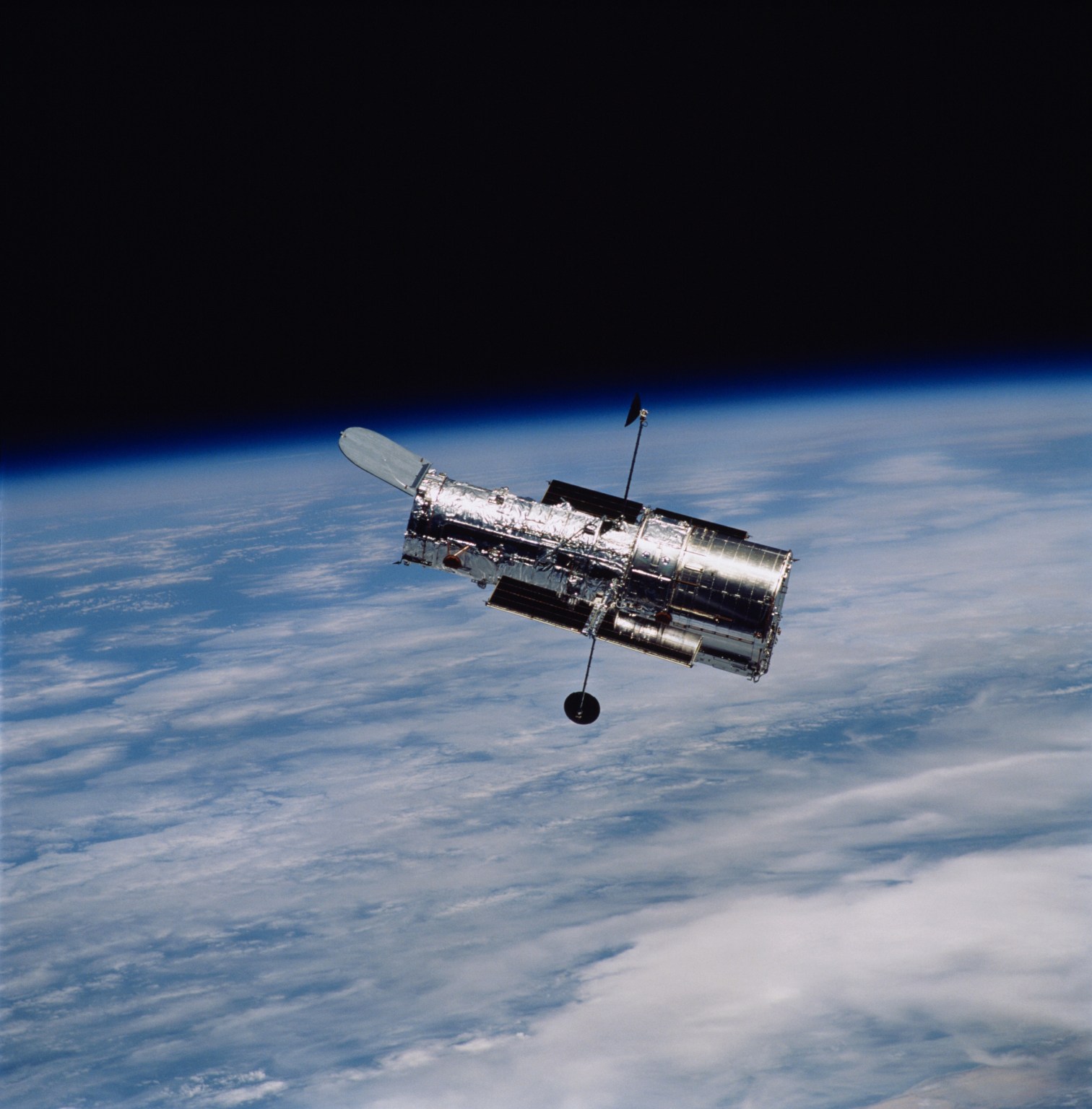1 min read
SDSS 1430+13, Teacup Galaxy

About the Object
- R.A. PositionR.A. PositionRight ascension – analogous to longitude – is one component of an object's position.14h 30m 29.76s
- Dec. PositionDec. PositionDeclination – analogous to latitude – is one component of an object's position.13° 39' 15.14"
- ConstellationConstellationOne of 88 recognized regions of the celestial sphere in which the object appears.Boötes
- DistanceDistanceThe physical distance from Earth to the astronomical object. Distances within our solar system are usually measured in Astronomical Units (AU). Distances between stars are usually measured in light-years. Interstellar distances can also be measured in parsecs.Redshift: 0.0852
About the Data
- Data DescriptionData DescriptionProposal: A description of the observations, their scientific justification, and the links to the data available in the science archive.
Science Team: The astronomers who planned the observations and analyzed the data. "PI" refers to the Principal Investigator.The image was created from Hubble observations of active galaxies from proposals 5426: PI Z. Tsvetanov (NASA/GALEX) et al. and 12525: W. Keel (University of Alabama, Tuscaloosa), K. Schawinski (ETH Zurich), V. Bennert (Cal Poly, San Luis Obispo), C. Lintott (Oxford University), D. Chojnowski (New Mexico State), D. Evans (Harvard-Smithsonian Center for Astrophysics), and M. Urry (Yale University). The science team comprises: W. Keel and W. Peter Maksym (University of Alabama, Tuscaloosa), V. Bennert (Cal Poly, San Luis Obispo), C. Lintott (Oxford University), D. Chojnowski (New Mexico State), A. Moiseev and A. Smirnova (Special Astrophysical Observatory, Russia), K. Schawinski (ETH Zurich), M. Urry (Yale University), D. Evans (Harvard-Smithsonian Center for Astrophysics), A. Pancoast (UC Santa Barbara), B. Scott (JPL), C. Showley (San Francisco State University), and K. Flatland (Cal Poly San Luis Obispo). - InstrumentInstrumentThe science instrument used to produce the data.HST>ACS/WFC and HST>WFC3/UVIS
- FiltersFiltersThe camera filters that were used in the science observations.ACS/WFC: FR551N and FR716N; WFC3/UVIS: F621M and F763M
- Object NameObject NameA name or catalog number that astronomers use to identify an astronomical object.Teacup Galaxy, SDSS 1430+13, 2MASX J14302986+1339117
- Object DescriptionObject DescriptionThe type of astronomical object.Active Galaxy
- Release DateApril 2, 2015
- Science ReleaseHubble Finds Phantom Objects Near Dead Quasars
- Credit

Color Info
Color InfoA brief description of the methods used to convert telescope data into the color image being presented.
Blue: FR551N + F621M Green:FR716N Red: F763M

Compass and Scale
Compass and ScaleAn astronomical image with a scale that shows how large an object is on the sky, a compass that shows how the object is oriented on the sky, and the filters with which the image was made.
Related Images & Videos
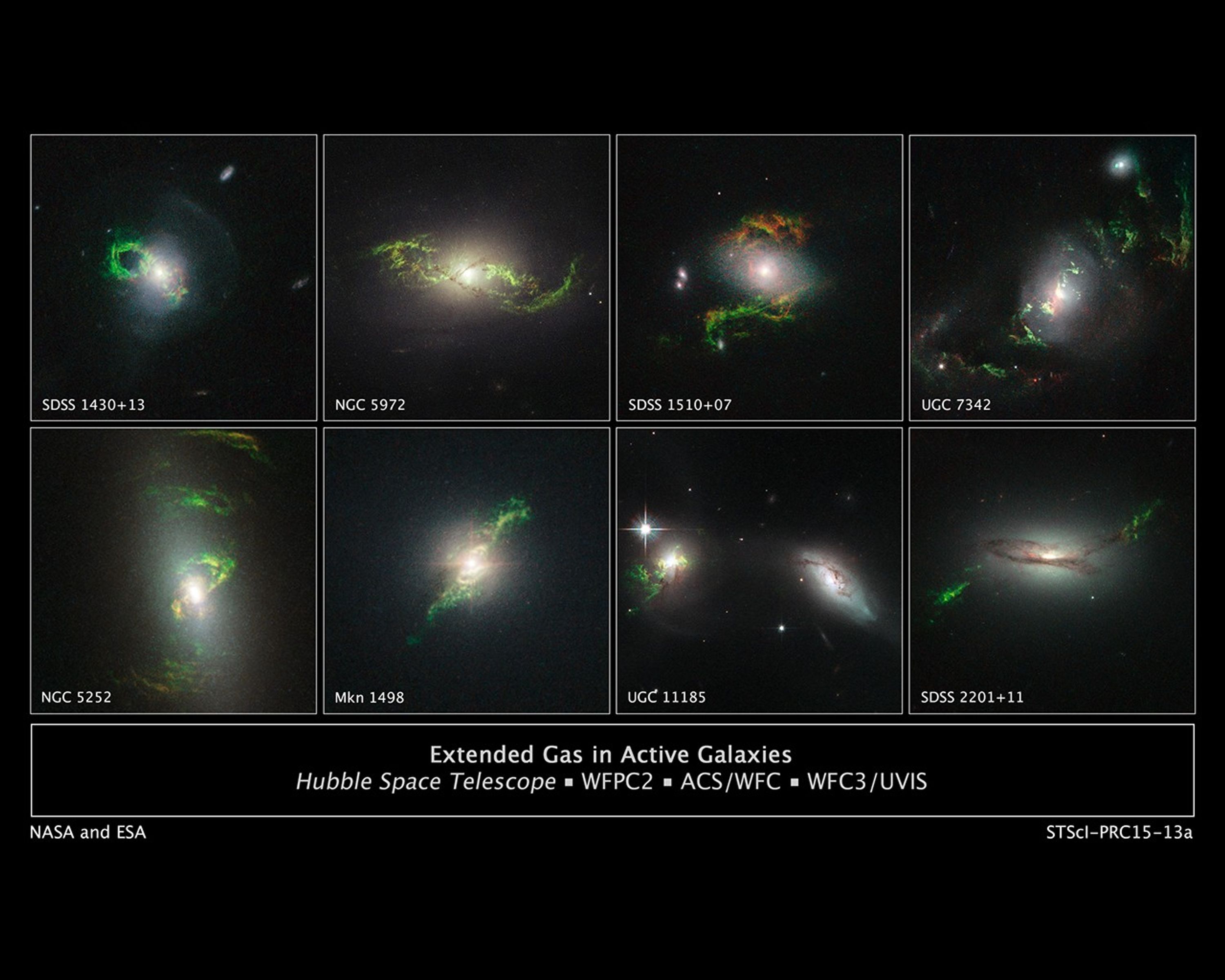
Extended Gas in Active Galaxies
These Hubble Space Telescope images reveal a set of bizarre, greenish, looping, spiral, and braided shapes around eight active galaxies. These huge knots of dust and gas appear greenish because they are glowing predominately in light from photoionized oxygen atoms.Each galaxy...
Share
Details
Last Updated
Aug 17, 2025
Contact
Media
Claire Andreoli
NASA’s Goddard Space Flight Center
Greenbelt, Maryland
claire.andreoli@nasa.gov

